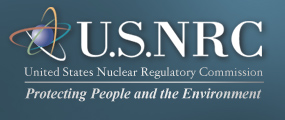Resolution of Generic Safety Issues: Item A-20: Impacts of the Coal Fuel Cycle Description (Rev. 2) ( NUREG-0933, Main Report with Supplements 1–35 )
DESCRIPTION
At the time this issue was identified in NUREG-0371,2 compliance with NEPA required that alternatives to a proposed Federal action be considered, and that required alternatives be balanced against the base case in terms of their associated environmental impacts. NRC had established, through its rulemaking authority, a generic description and evaluation of the environmental impacts of the uranium fuel cycle in WASH-1248,456 NUREG-0116,457 and NUREG-0216.458 Based on these studies, a summary table, Table S-3, had been prepared and promulgated as regulation in 10 CFR Part 51.20(e).
In 1978, a coal-fired plant was considered the only realistic alternative to a nuclear power plant. Existing treatment of the coal alternative was aimed essentially at economics and public health impacts; it was relatively incomplete in other areas of impact. It was believed that the comparison of the coal alternative to a proposed nuclear facility would be significantly improved, if a study were conducted for the coal fuel alternative that augmented the work that had been done by ANL in the area of health effects. Such a study would provide a comprehensive summary which evaluated the environmental effects of the coal fuel cycle in a form directly comparable to that for the uranium fuel cycle. In the absence of such a generic treatment of the effects of using coal for generating electric power, it was necessary for the staff to develop an analysis de novo for each licensing action, to present this individual analysis in detail in the EIS, and to defend it throughout the hearing process. It was believed that this repetitive staff effort could be avoided by preparing a generic statement suitable to support rulemaking proceedings. After the rulemaking procedure, such a statement would have the force of law necessary to avoid repetitive staff effort.
A thorough analysis of alternatives to a proposed nuclear power plant required an evaluation of the environmental effects of the coal fuel cycle to the same extent as the nuclear cycle. The environmental effects of the coal fuel cycle had long been recognized as being significant. There were deleterious effects to human health due to burning coal, but there were other significant socioeconomic and other environmental impacts at each stage of the cycle. For example, mining coal exacts a penalty in human health and safety, may require modification of large areas of land use requiring expensive reclamation and habitat restoration, and frequently produces polluting liquid and solid mine wastes. Environmental, social, economic, and health effects also accompany the transportation, storage, treatment, combustion, and waste management and disposal aspects of the fuel cycle. Failure to treat these factors had been criticized by ASLB and the ASLAB in the past, necessitating increased staff efforts in this direction.
CONCLUSION
This issue addressed the staff's efforts in improving its capability to make independent assessments of safety and, therefore, was considered a Licensing Issue. The issue had been covered extensively in NUREG-0252,459 NUREG/CR-1060,460 and NUREG-0332,461 and further work on the subject had been discussed with personnel of the National Academy of Sciences who had expressed the view that adequate scientific bases for analyzing impacts of coal burning did not exist. It was thought that a workshop could be arranged to determine what the questions were and how they could be resolved. Definitive answers required an extensive program over a period of years and the role of the NRC in carrying out such a program was expected to be determined by the Commission.412 The results of this issue were expected to be used in Item B-722
As a part of the improvements to NUREG-0933, the NRC staff clarified in SECY-11-0101, "Summary of Activities Related to Generic Issues Program," dated July 26, 2011,1967 that the Generic Issues Program will not pursue any further actions toward resolution of licensing and regulatory impact issues. Because licensing and regulatory impact issues are not safety issues by the classification guidance in the legacy Generic Issues Program, these issues do not meet at least one of the Generic Issues Program screening criteria and do not warrant further processing in accordance with Management Directive 6.4, "Generic Issues Program," dated November 17, 2009.1858 Therefore, this issue will not be pursued any further in the Generic Issues Program.
REFERENCES
|


